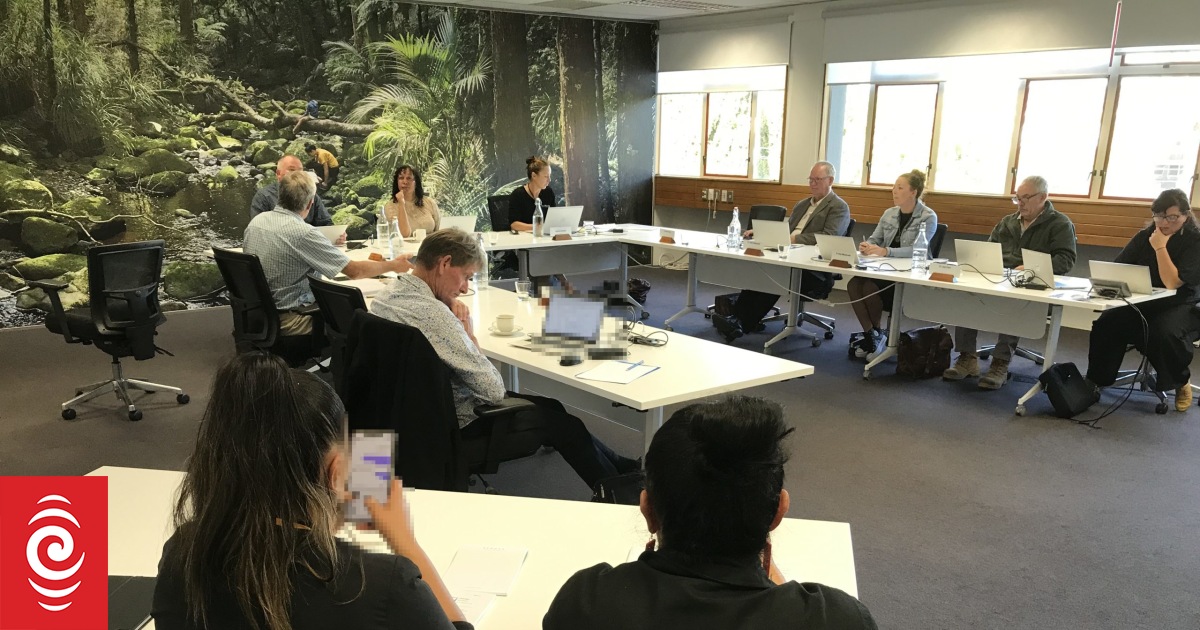Work has just started on repairing Tūtūkākā Marina, badly damaged in January last year by the Hunga-Tonga-Hunga-Ha’apai tsunami surge, which sank and wrecked boats and smashed infrastructure.
The major repair is focussed on building back stronger. The $2.5 million repair will be completed by the end of May, with a focus on building back stronger.
The marina’s management trust chair, John Healy, said work started on February 20 with the rebuild of the damaged fuel berth at the facility’s entrance. Two new fuel pumps are soon to arrive to finish off this work.
The surge that hit Tūtūkākā has resulted in more than $5.8 million of insurance claims, including from dozens of damaged boats.
READ MORE:
* New tsunami alert in works for New Zealand after Tonga eruption
* Tonga eruption: Scientists still studying tsunami impact in Northland
* Tonga tsunami: Tutukaka damage has business wondering, ‘what next?’
* Fishers run for lives as Tongan tsunami hits New Zealand, warnings continue
The Hunga-Tonga-Hunga-Ha’apai volcano exploded underwater at 5.10pm on January 15, 2022 New Zealand time.
Wave surges from Cyclone Cody were already affecting Tūtūkākā Harbour.
The first tsunami action hit its marina in darkness at just after 9.30pm that day.
Healy said new heavy-grade steel piles have been used on the jetty to replace timber piles. Special very heavy-duty steel hinge brackets have also been used to strengthen the pontoons’ connections as well.
Ninety of the heavy-grade steel piles will be used around various damaged parts of the marina during the repair job and would go towards making the facility able to better withstand an even stronger tsunami surge.
Lease said the tsunami had made the local community more aware: More people had evacuation plans in place and were aware of phone alerts as an option for knowing about an approaching tsunami.
Tūtūkākā Marina’s tsunami siren is one of three locally – including one between Schnappa Rock Restaurant and Dive Tūtūkākā, and the third at the Tūtūkākā general store.
Northern Advocate | Tania Whyte
New Zealand’s worst tsunami marina damage, to Tūtūkākā Marina in January 2022, included boats and marina piles getting wrecked.
Northland Civil Defence spokesperson Zachary Woods said Tūtūkākā tsunami siren provision was being updated as part of the region’s $6 million tsunami siren replacement programme.
Northland’s existing first-generation 205 tsunami sirens – from Te Hapua near Cape Reinga to the south at Mangawhai on the east coast and Ruawai on the west coast – will gradually be replaced with 96 new Danish-made sirens.
Woods said Tūtūkākā was to be among the first cabs off the rank when it came to this work.
A single siren would replace the current three in this location. The new tsunami siren’s location was still being worked on.
He said the community should not assume tsunami siren provision was going to decline because there were to be fewer sirens.
Alison Jeffs/Supplied
A total of 50 boats at Tūtūkākā Marina suffered damage or were sunk from the tsunami surge.
The new Danish sirens’ sound and functionality meant the network of 96 tsunami sirens across the north would perform better overall than the current 205-strong siren equivalent.
“They have a much greater sound coverage and can provide pre-programmed voice messaging as well as multi-tone siren sounds,” Woods said.
“… (They) have backup batteries and solar power and are activated separately from the mains power via the cellphone network or satellite.”
Woods said not needing to connect new sirens to mains power brought the opportunity for them to be placed closer to at-risk locations.
He said the new sirens’ extra functionality also meant Northland Civil Defence could narrow down tsunami alerting areas to specific locations if required, rather than the whole network of tsunami sirens being set off.
Supplied
Northland has 205 tsunami sirens but these first-generation sirens will soon be replaced by 96 state-of-the-art Danish ones. (File photo)
The first two shipments of the new sirens – which cost about $60,000 each – have arrived in Northland and the first phase of siren installation is on track to begin this year.
The progressive installations would be done in phases and finished between three and five years from now.
Woods said it was important to remember tsunami sirens were part of a range of warning options. Official warnings would also be sent via emergency mobile alerting, television, radio and Facebook as well as the national civil defence website.
Northland Civil Defence Emergency Management Group manager Graeme MacDonald said people should be aware of the risk of local source-tsunami generated on or close to the coast. These could arrive ahead of any official warning.
Alison Jeffs/Supplied
It is hoped the experience at Tūtūkākā Marina will be learnt from.
“Everybody who spends time on the coast should also know the natural warning signs of tsunami,” Woods said.
These included the sea behaving strangely, sudden sea level rise or fall and/or unusual noises.
It also included a strong earthquake that was hard to stand up in or one that lasted longer than a minute.
Northlanders can check out whether they live, work or play in a tsunami evacuation zone and plan their quickest evacuation route using Northland Regional Council’s interactive online maps, and can hear Northland’s tsunami sirens online.
Local Democracy Reporting is Public Interest Journalism funded through NZ On Air




